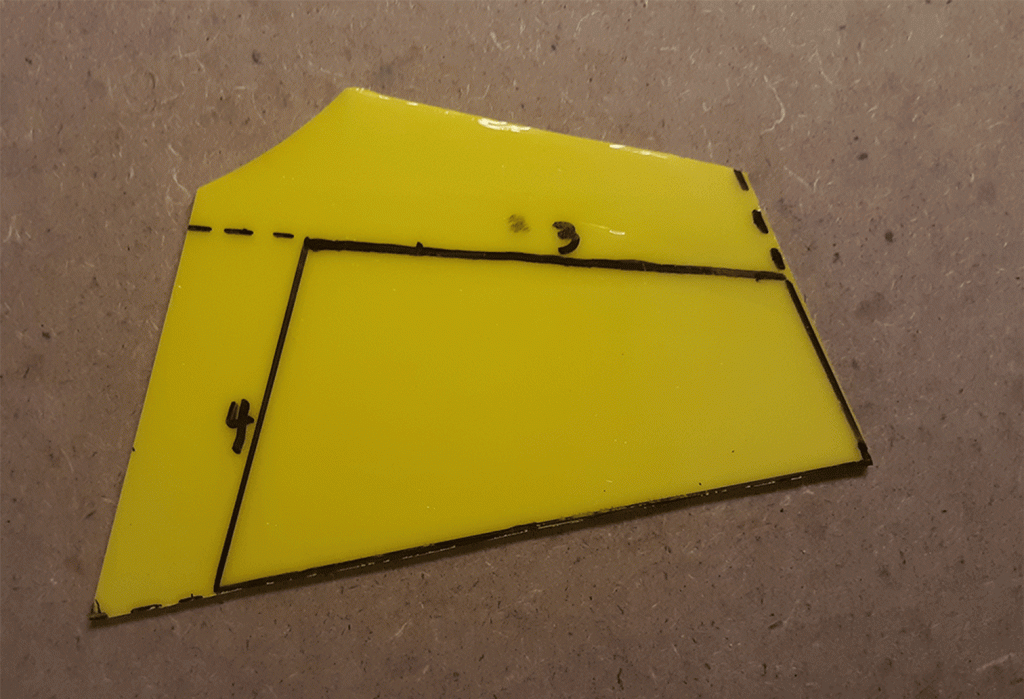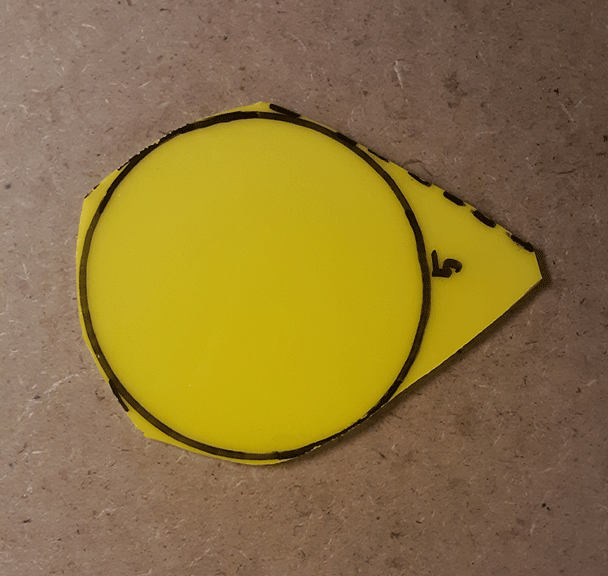Glass Cutting: Shape it up
Every piece of stained glass you ever cut will consist of strait lines, Concave curves (those that bend towards the inside of the piece), Convex curves (those that bend away), or a combination of all three. In this post, I will demonstrate how to perform these cuts using three separate shapes.
Normally when cutting out a shape, I would try to position it in a way that would cause the least amount of scrap glass when cutting. But for the sake of these demonstrations, I’ve placed the shapes in the center of the glass.
1st Shape – Trapezoid
The first shape we’ll be cutting out is a trapezoid.

Note: The numbers in the images indicate the recommended order in which you make your cuts.
When making more complicated cuts, you should study the template you create and try to visualize how each score will affect subsequent scores.
2nd Shape – Arch
The second shape is what I like to call an arch, which combines straight-line cutting with a tricky to score inside curve.

An inside curve like this one must be carved out through a series of small, archlike cuts that remove sections of glass gradually to reduce the risk of accidental cracking. If you just ran the cutter along the inside curve in one score and tried to break it, the glass would most likely cause the piece to split jaggedly outward towards the edges.
There will be times were you might have to re-draw a line in a different position in order to cut out the shape.


With the tricky part out of the way, continue making straight cuts until you have your shape.



3rd Shape – Circle
The final shape we’ll be cutting out is a circle, which will have you making multiple convex arcs.

Begin by cutting at the edge nearest you and continue in one fluid motion until you reach the edge.

After breaking the excess glass along the score line, rotate the piece clockwise and repeat the process.
Finally, make a score mart along the circle connected to the excess glass and snap it off.
It’s ok if your shapes aren’t perfectly cut out because in the next blog post I’ll be discussing how to correct this using a glass grinder.
Filed under Uncategorized | Comment (0)








